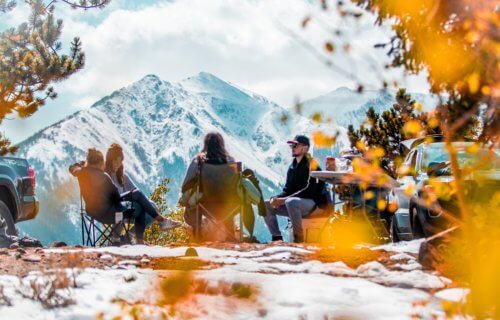PULLMAN, Wash. — Human activities have been disrupting the habitats of countless animals since the dawn of civilization. The destruction of forested areas for construction purposes, or hunting, are just a few examples. Now, however, fascinating new research suggests that the mere presence of humans is enough to disrupt the lives of nearby wildlife.
Scientists at the University of Washington analyzed hiking trails at Glacier National Park in Montana both during and after a COVID-19 closure. Those observations suggest humans are capable of creating a “landscape of fear” for species who hide from other apex predators. This subsequently influences and changes how nearby species use the land.
In collaboration with National Park Service researchers, study authors observed that when human hikers were present, 16 out of 22 mammal species shifted where and when they entered areas. The species in this study featured both predators and prey. Some of the animals totally abandoned areas they were using once humans arrived. Others just used these places less often. Some animals opted to adopt more nocturnal habits to avoid humans.
“When the park was open to the public, and there were a lot of hikers and recreators using the area, we saw a bunch of changes in how animals were using that same area,” says senior study author Daniel Thornton, a WSU wildlife ecologist, in a university release. “The surprising thing is that there’s no other real human disturbance out there because Glacier is such a highly protected national park, so these responses really are being driven by human presence and human noise.”
Which animals change their behavior the most around humans?
The research team hypothesized they would see an effect known as “human shielding,” which is when the presence of humans results in large predators avoiding an area, consequently giving smaller predators and even some prey species the opportunity to use certain places more often. Interestingly, this potential effect was only seen in one species: the red fox.
Foxes tended to be more present on or near trails when the park was open. Researchers say this may be due to their competitors, coyotes, avoiding such areas due to human activity. Meanwhile, many other species displayed a decline in use of trail areas when the park was open, such as black bears, elk, and white-tailed deer. A lot of animals cut back on activities during the daytime, including mule deer, snowshoe hare, grizzly bears, and coyotes. A few species, such as cougars, were largely indifferent to the human invasion.
READ: Best Hiking Trails In U.S.: Top 5 Spots Recommended By Outdoors Experts
While these findings are concerning, study authors stress more research is necessary to grasp the full influence of low-impact human recreation on species’ habits and survival rates.
“This study does not say that hiking is necessarily bad for wildlife, but it does have some impacts on spatiotemporal ecology, or how wildlife uses a landscape and when,” explains first study author Alissa Anderson, a resent WSU master’s graduate. “Maybe they are not on the trails as much, but they’re using different places, and how much does that actually impact species’ ability to survive and thrive in a place, or not? There are a lot of questions about how this actually plays into population survival.”
COVID shutdowns helped scientists learn about animal habits
These findings were largely facilitated by the COVID-19 pandemic. Both humans and wildlife like to use trails. So, researchers set up a series of cameras near several trails to study lynx populations in Glacier National Park when the COVID-19 pandemic began. The eastern portion of the park was closed in 2020, with only minimal access allowed to administrators and researchers. This action was taken as an attempt to keep the coronavirus from spreading to the nearby Blackfeet Indian Reservation. Images of wildlife were captured in summer of 2020 when the park was closed, as well as in 2021 when it re-opened.
“It’s obviously important that people are able to get out there, but there might be a level of which that starts to be problematic,” Thornton concludes. “Some additional research could help get a better understanding of that and help develop some guidelines and goals.”
The study is published in Scientific Reports.

